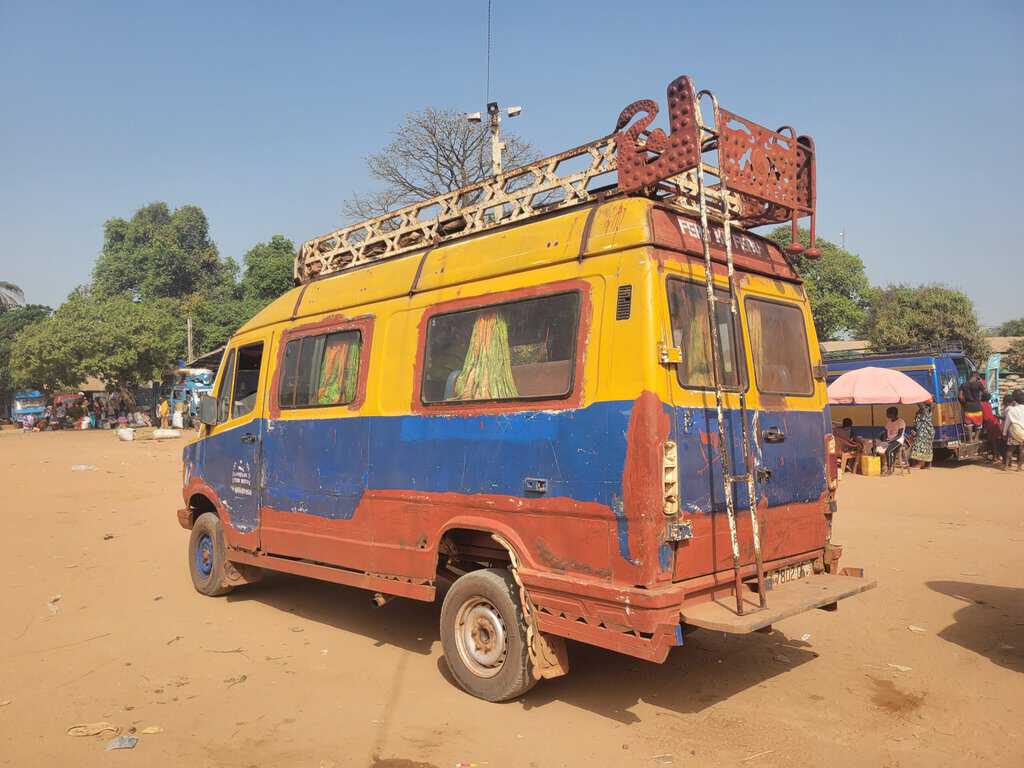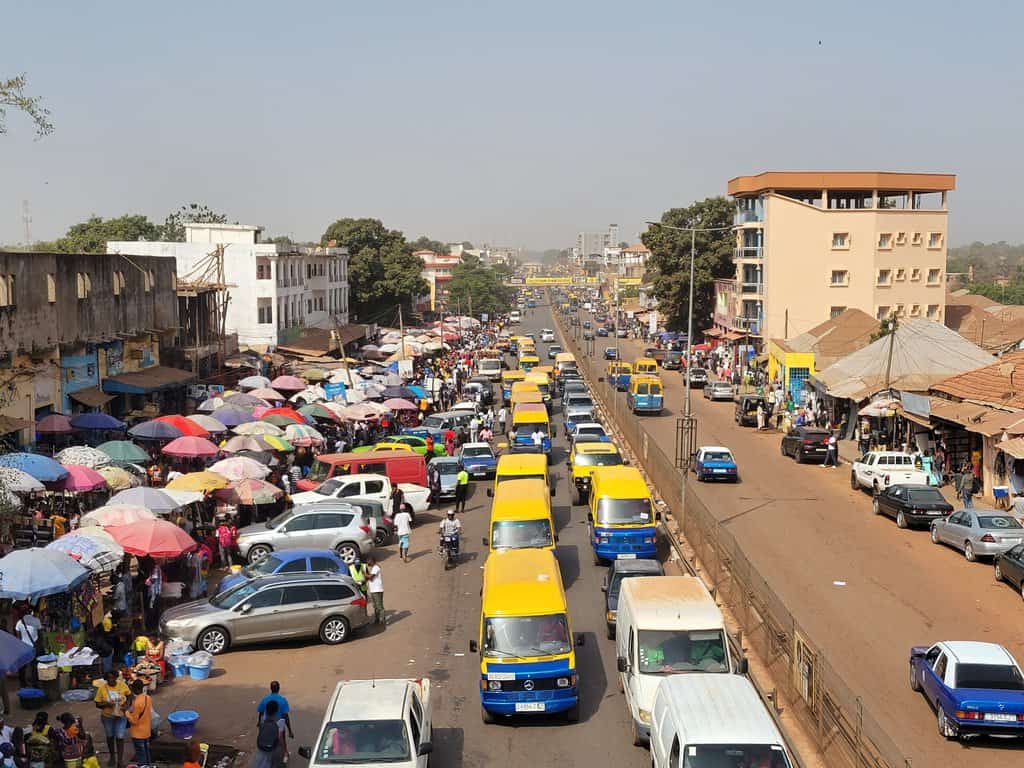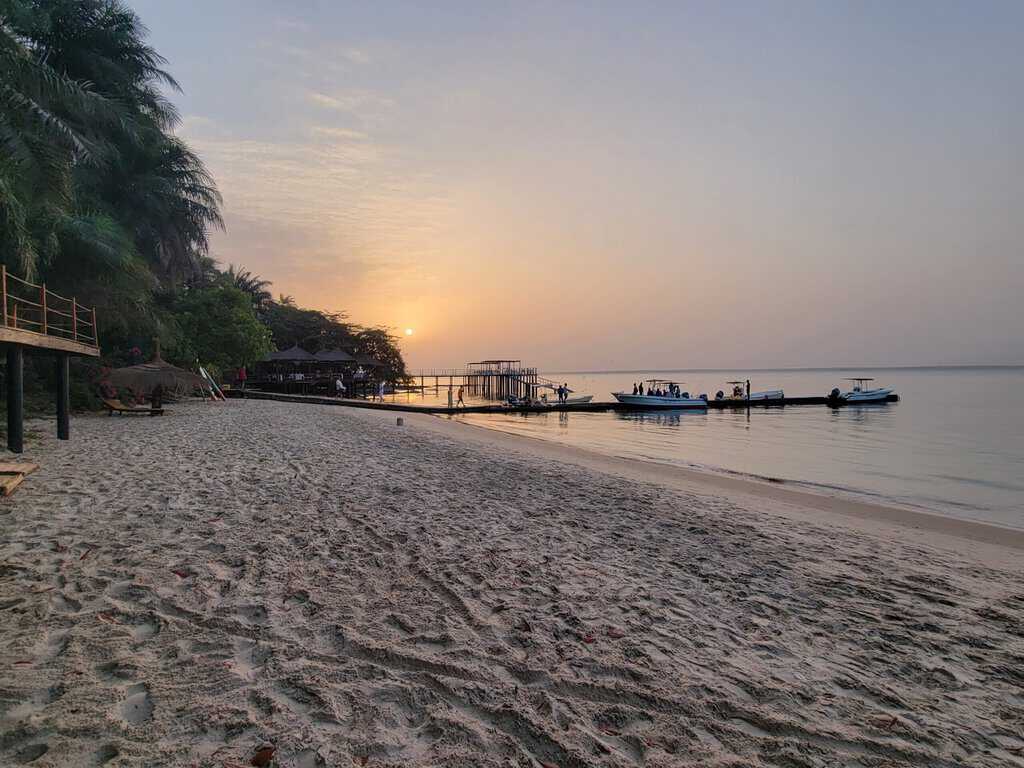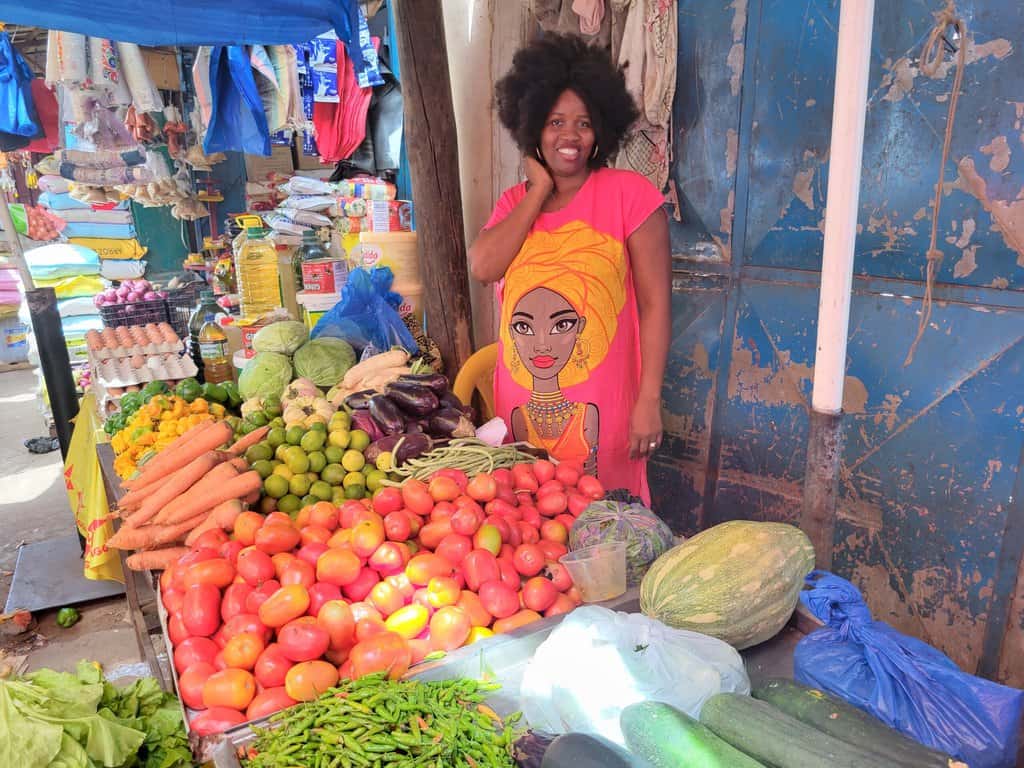Would you like to know if it’s possible to travel to Guinea-Bissau? Or how to reach the Bijagos Islands? Guinea-Bissau – Why Go and Things to Know is our personal experience exploring this country in 2024. Our adventure includes Varela, Bissau and Bijagos Islands. We share our insights on where to stay, where to eat and drink, and things to see and do. Guinea-Bissau – Why Go and Things to Know reflects our travel style and aims to provide useful things to know before visiting this obscure destination.
Why go to Guinea-Bissau?
Guinea-Bissau, ‘the slave coast’. This no doubt was once the case, and these sombre times will never be forgotten. However, today ‘the cashew coast’ would be more appropriate. Introduced by the Portuguese during the 19th century, cashews are the country’s number one export, and the nuts are sold all along the streets. Guinea-Bissau may be one of Africa’s poorer countries financially, but the people here have a priceless happiness. Getting around is a challenge, but the rewards at the end of the bumpy and dusty roads are unspoiled beaches and welcoming locals.
- Capital: Bissau
- Best time to visit: October – April (wet season is May to September)
- Budget/Mid-Range/Couple: AU$100 per day
- Currency: CFA (AU$1 = CFA452)
- Language: Portuguese
- Visa: Yes
- Difficulty: 2 (1-basic & 5-challenging)

Varela
Varela is a remote fishing village in the North West of the country, only a short distance from the Senegalese border. Life here is peaceful. You won’t find any resorts or shops. Fisherman still carve their boats out of old trees; woman tend to the gardens, children play. Locals gather around the beach each morning when the fisherman return, to see what’s on offer. Houses here are traditional. People grow what they need. You eat what is in season. Goats and chickens wander the sandy streets. Water comes from the well. Beaches and forests fill the horizon. The attraction here is the simplicity.
Getting to Varela
Varela is less than fifty km from Sao Domingo, but the road, or lack of one, means the journey takes around 2-3 hours. It’s hot and dusty, and the van will be packed with people and a few chickens, but this only adds to the experience. Vans leave the bus station at Sao Domingo when full, the first one usually around 12pm (CFA1500 plus CFA500 luggage). Motorbike taxis are also an option and will leave anytime. This is a lot of fun, and you get to appreciate the scenery and small villages along the way. They take 1.5-2hrs (CFA10000). You will find people selling various snacks at the bus station, and even a simple toilet. Additionally, motorbike taxis head to the border with Senegal, a short ten-minute ride through the cashew plantation (CFA1500).
Where to stay in Varela
Casa Aberta KasumayaKu is the best place to stay. Breakfast is included and there’s a restaurant that makes delicious local meals. The rooms are in traditional round huts, have an ensuite, and a fan. The staff are caring and helpful. Valentina the owner speaks English. It’s run as a community type project, with all local staff, and funds going to local schools and projects.
Where to eat and drink in Varela
Casa Aberta KasumayaKu is the best option. Fresh fish is their specialty. They make beautiful vegetarian dishes too. A highlight is their wood fired pizza night once a week, with BBQ oysters! It’s best to let them know early in the day if you are planning on coming and if you have dietary needs. The staff are very friendly. No English.
Things to see and do in Varela
Exploring the endless beaches This is definitely worth doing daily. You can walk for hours without seeing another person, just birds and cows lounging on the beach. It’s amazing.
Immerse yourself Learn about local village life by walking down the sandy tracks and roads to the various clusters of huts and gardens. Keep an eye out for old ruins slowly being swallowed by the jungle.
Getting around Varela
Unless you have your own transport, you walk.

Bissau
Modern conveniences and unmissable attractions Bissau does not have. However, undeniably, Bissau has a charm that is difficult to find elsewhere. The old town is pleasant, with the old crumbling buildings creating a nostalgic atmosphere. Stalls line the pavement, offering anything from fresh fruit to carvings and clothes. People smile and wave, they ask what you think of their country. Markets, restaurants and bars can be found down dusty lanes. Women sell fresh oysters and gambos, men sit and chat. Life is slow, stress free and calm. Spend a bit of time here and Bissau will no doubt grow on you, entice you into its ambience, and make it hard to leave.
Getting to Bissau
The easiest way to reach Bissau is by plane, with flights from Portugal, Morocco and a few neighbouring countries. Flights can be on the dearer side, so book in advance. A taxi from the airport into the city takes about twenty minutes (CFA2000). It’s a basic airport, with one gate, a café, a toilet, and no currency exchange.
Arriving from Senegal by land is a much cheaper option. Buses leave from Soa Domingo on the border every couple of hours, the ride taking two-three hours (CFA2500, plus CFA500 for your bag). It’s a bumpy ride, with the road in poor condition, but there’s plenty of things to see out the window, if you can see through the dust! You will be dropped off at Bissau Bus Station, which is a bit of a drive out of town. A taxi into the centre of the city will cost around CFA3000.
Where to stay in Bissau
There’s a number of high-end hotels around the city, catering for NGO’s and other officials. Mid-range and budget places can be a bit harder to find. There are some good Airbnb options around, which will give you the added bonus of supporting a local family. We found a great one in the Dallas area, near the Bandim Markets. The city is small, and most of the spots to stay are within walking distance of the old town.
Where to eat and drink in Bissau
There is a great variety of restaurants, cafes and street fare, to suit every budget and preference. Not surprisingly, there’s no shortage of fresh fruit and vegetables around. These can be found in the various local markets, or at random stalls set up on the pavement. Street food is popular, cheap, and easy to find. We enjoyed self-catering with all the fresh produce and loved the vegan street snacks, such as cooked cassava, rice cakes and yucca fries.
- Get to Handi Indian (great vegetarian menu and friendly service, near the central market, good value)
- Don’t miss Bandim Market (Bissau’s largest market with fruit and vegetables and street food galore. Chat with the friendly women)
- Check out Ga Mela (popular restaurant and bar in the old town. Generous portions. Bit of a wait. No English speaking staff or menu)
Things to see and do in Bissau
The Old Fort It’s not an official attraction, but definitely worth a visit. You will have to head to the main entrance, and ask the guards nicely if it would be possible to have a tour. If you are lucky, they will call one of the Captains who will come to the gate to collect you, and he will show you around. It’s where the Guinea-Bissau military are based. There’s a museum, and even a cemetery. Limited English. You will be asked for a donation at the end, he was happy with CFA2000. Took about an hour.
The Old Town With its crumbling buildings, slowly being restored, it is interesting to explore. Along the waterfront, people and businesses still use the old buildings. At night the streets liven up.
Bandim Markets Spread out over four blocks around the Dallas area. Making your way through can be a challenge. You will find most things on offer, from chickens to car parts. You will find the best selection of fruit and vegetables here, and also home-made treats and snacks. If you are unsure of what it is, just ask. The ladies are friendly, and some speak English.
Getting around Bissau
You won’t have any issues finding public transport around town. Taxis, vans and motorbikes are everywhere, waiting to whisk you off in any direction. Unless you are heading out of town, walking anywhere around the old town is possible and enjoyable.

Bijagos Islands – Bubaque and Rubane
Guinea-Bissau’s number one attraction, the Bijagos Islands are scattered around only a few hours offshore. Bubaque is the largest and most populated. It is also the easiest to reach, and a base to access the more remote islands. Bubaque has a number of hotels and guesthouses, some basic shops, and some eating options. It’s a favourite weekend break for locals on the mainland. Other islands such as Rubane and Orango are home to all-inclusive resorts, traditional tribes and villages, or even rare salt-water hippos.
Getting to Bijagos Islands – Bubaque and Rubane
A ferry departs Bissau port once a week, on Fridays, taking four hours CFA12000. The ferry returns on Sundays. If you want to travel on a different day, fast boats leave most mornings, also from the port. The journey is much quicker, one-two hours depending on conditions CFA30,000pp one way. Once you are on Bubaque, transport to the other islands is via local canoe, the price negotiated before departure. If you are staying in one of the resorts on nearby islands, they will pick you up from Bubaque, Bissau, or even the airport. They all have private fast boats, allowing guests to come when they please.
Where to stay in Bijagos Islands – Bubaque and Rubane
All guesthouses are within walking distance of the wharf. Quality and prices vary, so shop around. On Bubaque Saldo Mar is a popular choice. The simple accommodation includes breakfast. Plus, there is an on-site restaurant. It is a lovely setting with amazing views. On Rubane we stayed at Ponta Anchaca Lodge, which offers beautiful bungalows right on the beach, good food, and tours to other islands for EURO100.
Where to eat and drink in Bubaque and Rubane
Bubaque has a small local community. Local markets and stalls sell fruit and peanuts. There is also a shop with very basic supplies. Local bars and restaurants pop up around town in the afternoon and evenings. Most hotels and guesthouses have eating and drinking options. Rubane offers a bar and three course French style meals on a terrace over-looking the ocean.
- Get to Saldo Mar (beautiful meals with the best view on Bubaque)
- Don’t miss Cafetaria Nanque (local place on Bubaque with delicious home cooked meals, look for her sign on a gate)
- Check out Ponta Anchaca on Rubane (enjoy a fancy three course meal, have a drink at the bar)
Things to see and do in Bubaque and Rubane
Relaxing and enjoying beautiful beaches is the definite attraction. The beaches are secluded and often deserted. Walk, read a book, watch the sunset.
Walking around the islands and admiring the views and village life.
Hiring a local guide and canoe to take you to other islands. Sustainable tourism projects support local villages on each of the islands.
Getting around Bubaque and Rubane
There are no cars, people walk everywhere. For longer journeys, motorbikes will take you. Plenty of canoes to take you to the other islands. Fast boats will collect you from the jetty if you are staying at any of the nearby lodges.

Getting to Guinea-Bissau
Portugal is the only European country with direct flights to Guinea-Bissau. Morocco, Cape Verde and a couple of other African countries offer flights once or twice a week.
Access is easy overland from Ziguinchor, Senegal. This is how we travelled. Entering from Guinea in the South is also an option but involves a two-day bus/taxi ride.
Useful things to know before visiting Guinea-Bissau
Power outages are common. All the countries power is supplied by an offshore power ship. Finding accommodation with a back up generator or solar is a good idea.
Roads and infrastructure are very limited. Transport is slow and bumpy.
It’s safe. People are friendly and kind.
English is taught in high school, so you will be able to communicate with some people.
Money changers hang around in the old town. They will approach you asking if you want change. You will get a better rate for $50 and $100 notes.
Spar Supermarket is the best in the country, and sells decent wine.
Final thoughts on traveling in Guinea-Bissau
Guinea-Bissau is not an easy country to reach, and travelling around the country can take hours or even days. Local transport is crowded, hot and dusty. Accommodation options outside of the capital are limited and basic. These things are true. But if you are prepared to adapt, evolve, and try to fit in, things seem to become more normal. You accept situations, and waiting three hours for a van to fill up won’t be a problem. Shopping on the street for fruit and vegetables, lunch or dinner becomes fun. Talking to the locals, understanding their challenges, listening to their hopes and dreams becomes a highlight. They love their country, they are proud and happy people. They may not have a great deal of possessions, but they are content. You can learn a lot travelling here. It’s a rewarding country in a different way. It’s not a destination to tick off sights from your guide book. It’s a destination to appreciate life, that of the locals, and your own. Guinea-Bissau is a beautiful country, filled with beautiful people. T.I.A. This is Africa.
